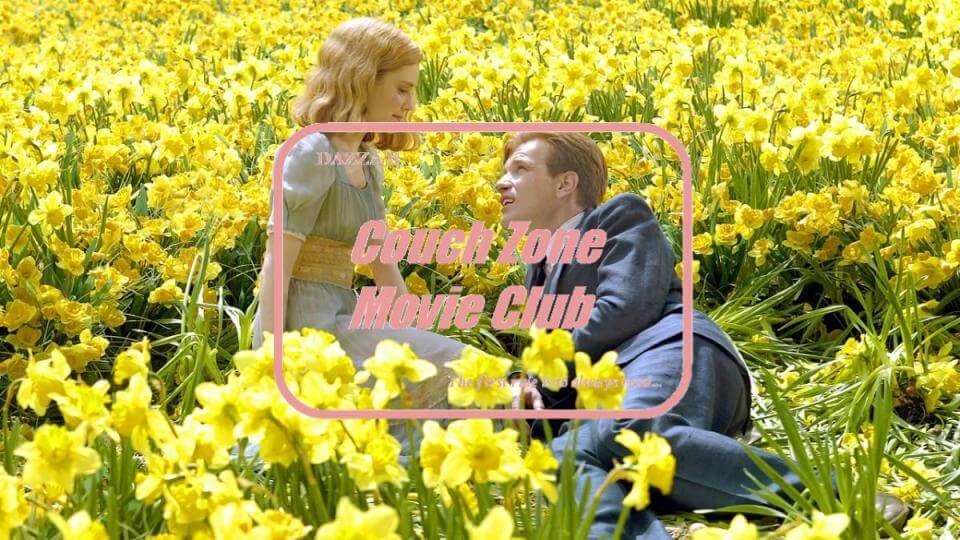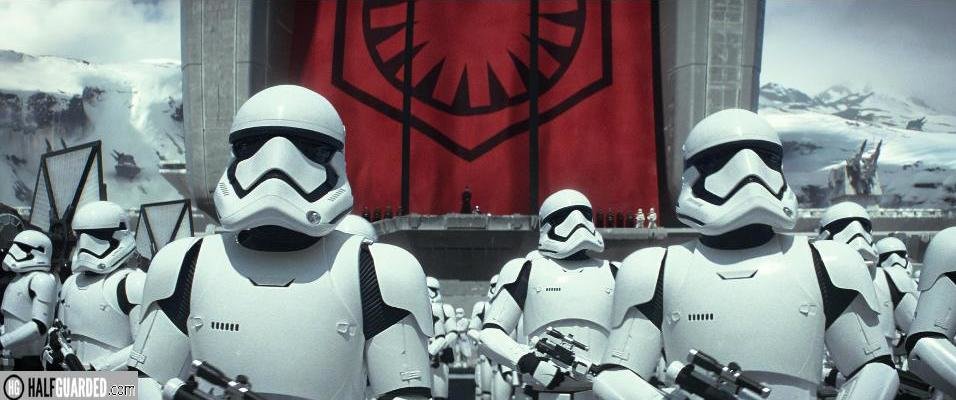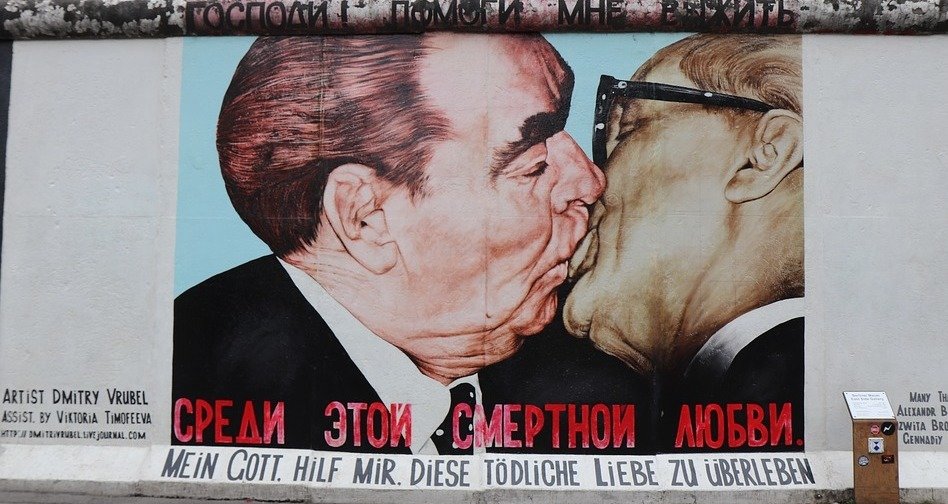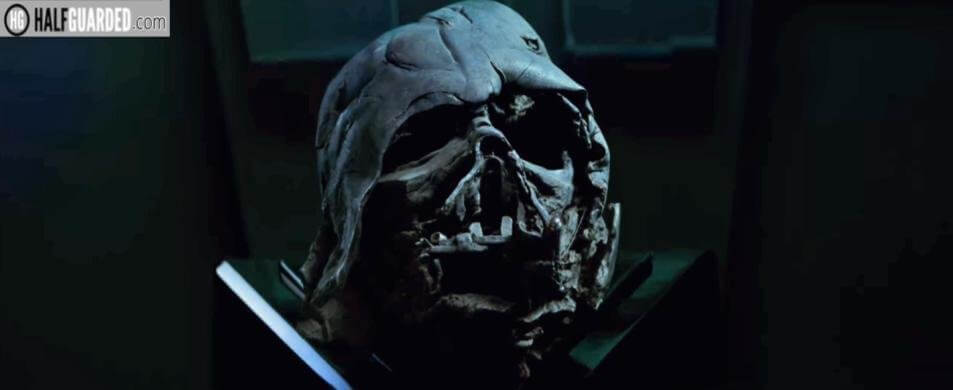In 2003 six out of the top ten movies were sequels. As if to mirror this the most important world event that year was also a sequel. As after 22 years after the first one America brought us Gulf War II. With a flimsy, contrived motivation for this sequel with a plot about weapons of mass destruction that never got a pay off, America invaded Iraq although the only member of the original supporting cast that agreed to sign on turned out to be the UK. The role of George Bush as President of the United States was recast with another George Bush, his son in fact.
While not as popular with audiences as the original (It drew many protests from the public) Gulf War II proved a money winner for military contractors and the oil industry. However the conclusion saw the main villain dead and chances of a trilogy unlikely.
With an unpopular conflict in the Middle East creating tensions all over the Globe there was a sense that the 21st century was seeing humanity taking several steps backwards. In this troubled and frightening climate, it makes sense that perhaps we needed some optimism to escape to with our movies.
I’m probably reading far too much into this, but the three films that stood out in 2003 all had an uplifting vibe, that themes of rebuilding, reconnecting, hope and at it’s most basic level, simply love.
Naturally to balance this, my WTF? moment for the year is an indulgence of gore and nastiness of epic proportions.
Seabiscuit: Director Gary Ross

A veteran horse trainer sees potential in an ill tempered racehorse. Teaming the horse with a troubled jockey, Seabiscuit’s underdog story makes him a hero during the depression on the 1920’s.
Laura Hillenbrand’s Seabiscuit is one of my favourite books of all time. It’s an amazing account of the underdog sensation that stole the hearts of an American public in need of a hero during the Great Depression and brings the big races to life with heart pounding excitement. So when a film on Seabiscuit’s life was to be made and based on the Hillenbrand book that I loved so much, my expectations were obviously very high.
Fortunately, Seabiscuit managed to capture the emotion that the book invoked in me, as well as covering the many varied elements that enlightened me on the world of horse racing, from the experience of the jockeys, trainers and the horse itself.
Just like in the book Seabiscuit is imbued with his own personality, as a troubled horse with a difficult temperament. We’re introduced to the delicate psychology of training horses and find that Seabiscuit was used to boost the confidence of other horses by having the jockey deliberately pull him back to lose on the training track. As a result Seabiscuit’s began to act the same way in real races, the instincts of his racing spirit destroyed after been taught to lose.
As a folk hero Seabiscuit represented the plight of the American public in more ways than they even released as they flocked around radio sets to follow his rise to success. Held back, used and abused for the advancement of others and disillusioned because of it, he’s the perfect metaphor for the hopeless situation of those suffering under the depression.
Just as broken are the team that surrounds him. Trainer Tom Smith (Chris Cooper) is a drifter in life, owner Charles Howard (Jeff Bridges) lost his marriage and successful business after falling to depression following the death of his son while jockey Red Pollard (Tobey Maguire) is in tatters, his family ruined by the depression and riding half blind after competing in underground boxing for extra cash. By coming together when Smith see’s something in the horse that has been written off, all four of them are able rebuild their lives. This is especially true with the relationship between jockey and horse as both are ill tempered, violent even, loners cast out from rest of the racing community.

As well as been a heartfelt, feel good film, Seabiscuit is absolutely gorgeous to look at. For much of the film it has the rustic, dusty look of 1920’s America, but on race days it bursts with an exciting vibrancy of the pomp and ceremony. Being a big fan of colour in movies (something that I think is missing in the modern scene), I fell in love with how bright and alive the screen became with the crisp colours of the jockey’s outfits and how majestic and powerful the horses came across. It’s a stunning looking movie.
In both the book and film, it’s the rivalry with the formidable War Admiral that steals the story of Seabiscuit. As Seabiscuit became the working class hero on the East Coast, on the other side of the country in New York, War Admiral was seen as the dominant, greatest horse around. Owned by a wealthy tycoon, the rivalry had everything to capture the imagination, East Coast vs West Coast, Rich vs working class yet the clash in a regular race never manged to happen. Eventually a dramatic one on one showdown had to be arranged. The film captures the tension up to this race beautifully, with the start of the race freezing to show stills of Americans from all walks of life surrounding radio sets to show the country coming to a standstill.
One of my favourite moments in the film is when Red, injured and unable to ride in the race with War Admiral, tells the stand in jockey the secret to winning is to ride Seabiscuit side by side to let him get a good look in his rival’s eye. Later trainer Smith tries to independently give him the same advice, the jockey responds “you’re not the only one who knows this horse.”
Like all the races in Seabiscuit the showdown is filmed with an variety of cuts, closeups that express the frantic pace and power of the horses, longshots that take in the excitement of the crowd and angles from above the race, behind and in front of the runners. The speed and danger is wonderfully conveyed and the drama and storytelling is as good as in any sports movie.
Seabiscuit is an amazing sports movie, which sadly seems to have been forgotten since it’s release. It was nominated for seven academy awards including best picture, and to emphasise how much of a visual feast the film is was given consideration in the cinematography, costume and editing departments. Sadly it failed to win any of them, losing out mostly to The final Lord of the Rings film and it’s three thousand fucking endings.
The real Seabiscuit came along at a time when America needed hope and a distraction. So it may feel fitting that when his story was told in an uplifting feelgood film, it came along at a time when people needed to see something good and positive and was about people rebuilding themselves up.

Love Actually: Director Richard Curtis

As the chaos of Christmas approaches, the pursuit of love seems to be in the air for lots of familiar British faces.
I do believe it’s through movies that I’ve come to learn I’m on a different emotional wavelength to other people around me. Anyone who has read my previous instalments and my manpoints losing selections such as Steel Magnolias will already know this
Case in point, the time I walked out of the preview showing of Love Actually. Here was a film that had uplifted me and brought upon me a massive, warm hearted glow and yet my mood changed as a large, bearded, overbearing critic proclaimed “well what a load of sentimental crap,” and I glared daggers at the back of his head which I’d liked to have hit with a blunt instrument. Yet similar responses were shared from my colleagues at work the next day (all the staff had been invited to this preview showing) who thought it sickly sweet and corny. It was also trashed unmercifully on the Late Review, a stuck up pretentious arts show that to this day I don’t know why I ever used to watch.
And they may have a point. Love Actually is sentimental, sugary sweet and bends over backwards to pander to it’s audience with cosy and warm, feel good vibes. And it’s for these same reasons that I unashamedly love this film.
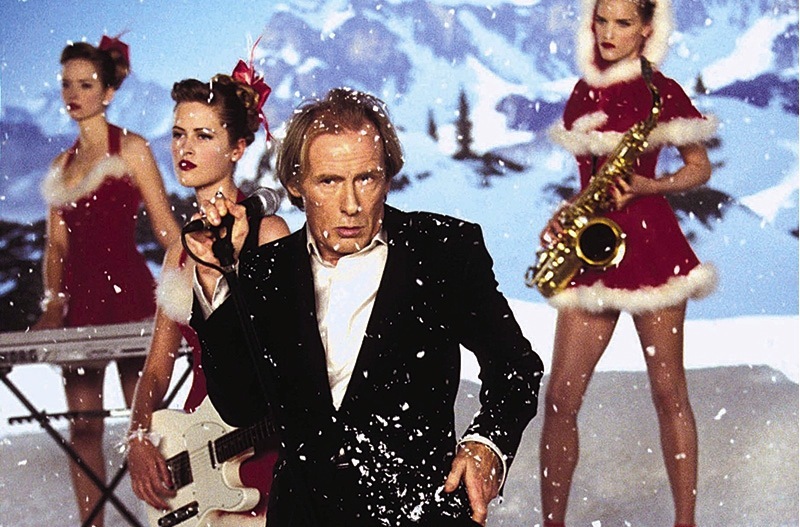
There are no less than nine storylines in Love Actually, all of them on the pursuit of love in one form or another. Amongst them is Hugh Grant as the new Prime Minister falling for his perky but foul mouthed assistant, recently widowed Liam Neeson trying to guide his step son in pursuing his school crush, Alan Rickman being tempted to cheat on his lovely wife Emma Thompson with his secretary, Martin Freeman and Joanna Page getting to know each other as naked body doubles and hilariously Bill Nighy as a faded Rocker trying one last gasp in his career with a Christmasied bastardisation cover of “Love is all around” but as “Christmas is all around,” (an obvious gag at For Weddings which was written by Love Actually’s director Richard Curtis).
There is a very loose “Short Cuts” style web that connects the stories. Many of the characters are at the wedding of Keira Knightley and Chiwetel Ejiofor at the start of the film. Emma Thompson is the brother to Prime Minister Hugh Grant and is best friend to Liam Neeson who’s son’s big moment and shot at his girl is at the school play where many of the other characters are there for one reason or another. Similarly they all happen to be at the airport arrival lounge at the end of the film.
In a nice variety, some of the stories are played for laughs, others have the “Will they, won’t they” get together drama. But for all the laughs and feel good moments where we finally get “that” kiss, the story that always stays with me is the love triangle that Walking Dead’s Andrew Lincoln shares with Knightley and Eliofor. At best man at their wedding the implication is that Lincoln dislikes Knightley, but in a delightful reveal when Knightley views the video he discreetly filmed at their wedding and finds all the footage is of her she to her shock realises he is in love with her.
This leads to a scene which has become iconic and parodied many times as Lincoln on her doorstep tells her finally how much he loves her with hand written Bob Dylan style signs. It’s a sweet scene, not designed to win Knightely but to just let her know how he feels and allow him to move on, for which he’s rewarded with a Christmas kiss. But the moment that gets me every single damn time, is as he walks away and mutters to himself “Enough now!” That line for some unknown, psychologically underlying reason brings tears to me eyes, and even now as I type this, remembering that moment I can feel myself welling up. (For what it’s worth my Grandad has the same reaction to the them from Where Eagles Dare, so there may be an emotionally unstable gene that runs through my family).
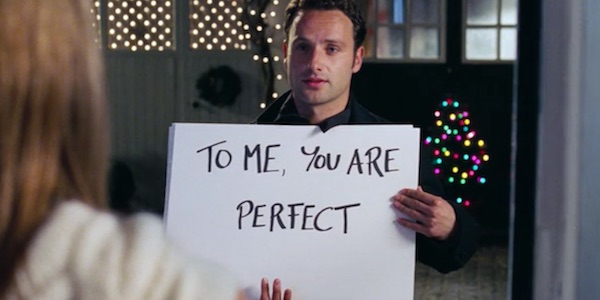
As moving as “enough now” is, there is also a bitter suite epilogue to the arc in the airport scene, as it turns out Lincoln as joined the couple on the ride over. The implication is that he’s done so just to be in her company for a while and that he’s still not managed to get her out of his system.
There are a few other storylines that don’t appear to end happily ever after. Laura Linney’s arc where she almost hooks up with Rodrigo Santoro, is doomed to failure due to the interruptions from the phonecalls from her mentally ill brother. The final scene of her is spending Christmas with her brother in the carehome.
But the saddest ending is that of Emma Thompson. After discovering that her bastard husband has secretly bought his trollop secretary an expensive necklace that she assumed was for her, she realises that an affair may be imminent. In a heartbreaking scene she breaks down while listening to the Joni Mitchell CD that he has bought her instead. In the final airport scene as she meets him off the plane it’s quite unclear what has happened since (I’ve always suspected that he’s been “allowed” to see his secretary) but in any case the deflated tone and expression when she says “let’s go home,” is so sad for such a heartwarming character.
Cynics and critics be damned, I find Love Actually a joy to watch. It’s genuinely funny at times, with Bill Nighy running away with the film with every scene he’s in and Hugh Grant managing to be likeable one last time (the scene with him standing up to the creepy, harassing American President was a timely political wish fulfilment for British audiences unhappy at been dragged into George Bush’s war in Iraq).
I’m positive today the film would be written about as being “problematic”, but occasionally a sentimental film where people are wanting to love each other, is just what’s needed to bring a smile to my face.

Big Fish: Director: Tim Burton
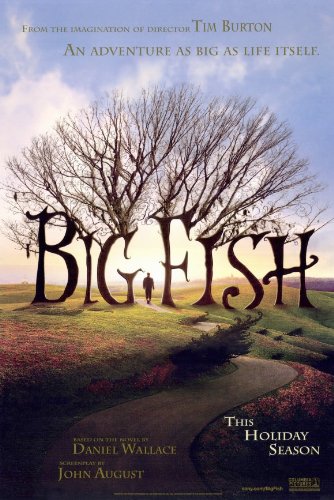
A son reconnects with his father who has a habit of telling entertaining but impossibly fantastical stories. With the father on his death bed, the son begins to wonder if there could be some truth to them
It’s curious when looking back at films year by year as to how attitudes towards them change. There are many well loved films that were totally ignored or derided on their initial release, but have slowly gained an audience since and are considered cult classics today. But many times there are films that just seem to disappear completely, which despite their merits are forgotten unless some film nerd on a weird project to write a year by year film blog sees it on a 2003 list on IMDB and goes “oh I remember that one!”
Big Fish is one of my favourite Tim Burton films, is probably the last of his great ones, yet seems to have been forgotten when comes to celebrating his work. It has all the fantasy hallmarks of his whimsical imagination, with some truly stunning visuals (there’s a beautiful scene where time literally stands still at a circus) and has a childlike fairy tale walk through the modern world.

Albert Finney plays Edward Bloom who infuriates his son Will with his outlandish stories, especially at his wedding where he tells the story of catching a giant catfish with the use of a wedding ring. On his death bed he continues to tell the stories which are dramatised with Ewan Mcgregor playing the young Edward embarking on unlikely adventures which bring him into contact with a giant, outlandish circus performers, a secret hidden town and during a secret mission behind enemy lines in the Korean war helps Siamese Twins defect to the US.
The stories are charming and entertaining, with a fabulous dream like quality while Mcgregor plays his role with an endearing small town naivety, driven by kindness towards others. However away from the spectacle the meat of the film is in the real world relationship between father and son. A wedge is drawn between the two as the son resents the stories which he feels prevented him from truly knowing his father, resulting in him growing up a cynical realist. However the son on investigating the stories finds there is more truth in them than he realised, many of the people were real and the events happened though potentially exaggerated and that his deeds outweighed his fantastical personality. There’s even a brief glimpse (unseen by anyone in the film) of a large fish in the family pool that hints even that story may have a degree of truth.
The final scene is truly moving, with the son taking over the story for his dying father and constructing for him a wonderful and apt sendoff, surrounded by all the characters from his stories. There is a sense that the son has finally learned that although his father lived one step in a fantasy, he also lived a full and amazing life in the real world.
Big Fish is a hard film to categorise, a difficult story to sell. But for those who take the time to seek out it’s a wonderfully rewarding experience, an adult fairy tale that embraces escapism as a way to enhance a life well lived.

WTF???????
Freddy vs Jason: Director: Ronny Yu

OK, there has been a lot of nice, inspiring, uplifting movies discussed in 2003, so let’s go fuck some shit up shall we.
Around 1989 rumours began to circulate that work had commenced to crossover the Friday the 13th and Nightmare on Elm Street movies, enabling a clash between the two biggest psychos on the screen at the time, Freddy and Jason. Seemingly too good to be true the film never transpired since the studios Paramount and New Line couldn’t agree to work together. Even when New Line ended up with the rights to both characters the film was constantly delayed with the attempts to keep the two franchises solo films going. After some fifteen years and the complete bomb of Jason X (which saw Jason in space for fucks sake) finally we got to see what we all wanted, these two villains hack and slash the living shit out of each other.
And on that level this film bloody well delivers.
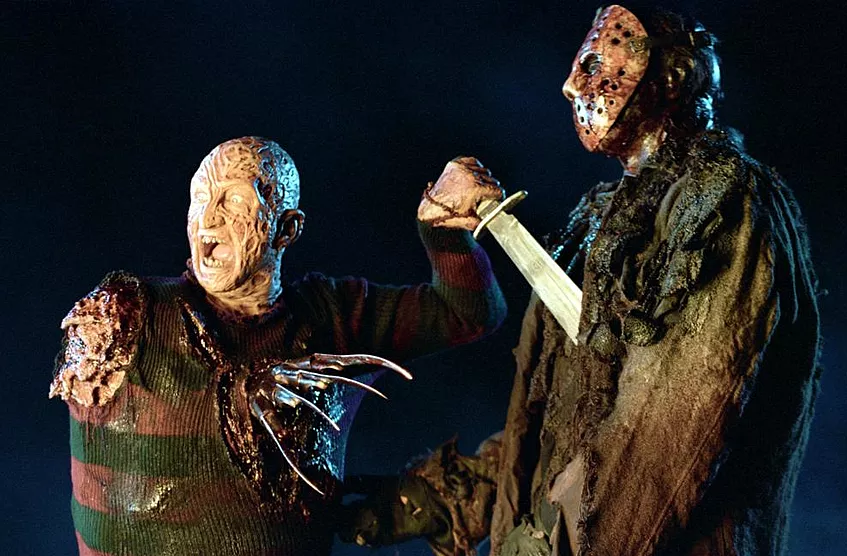
It’s a simple, contrived premise to bring these two maniacs together. But in a weird way it kinda works.
Freddy has lost his power over the town of Springwood that he terrorised for so long as the kids have forgotten him and aren’t scared enough for him to get into their nightmares anymore. So Freddy lures Jason to Springwood, hoping that he’ll scare the kids enough to open the door for him to return. The only problem is Jason is too effective killing his victims before Freddy has a chance to get his claws (pun intended) into them. So Freddy has to try to stop Jason’s rampage so he can have his fun killing the kids himself, that’s right the two psycho’s are battling for the rights to kill the people of Springwood. It’s so devilishly apt!
Naturally the film s dragged down somewhat in the middle by the potential victims caught in the middle and who’s plight we’re supposed to care about. But not to worry, they mostly get out of the way when the epic showdown comes. Because plot and story be damned, we know what we’ve come to see, we want some blood, guts and violence as these two finally meet their match in each other.
When the fight comes it’s a cracker. These two go at each other with the unbridled pleasure that only the sight of two bad guys kicking the fuck out of each other can bring. They brawl, slash and disembowel each other relentlessly. Limbs are lost, chests punched through, eyes stabbed, flesh burnt, it’s bloody brutal and I loved it.
You can’t argue that this is a great film on any level, but it’s so damn satisfying and fun. Watching two iconic and recognisable horror characters on the screen together brings us everything that the genre of “Vs”promises but rarely delivers.

See ya next time for 2004
Dazza

